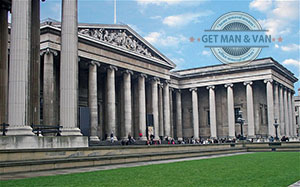The British Museum and Six of Its Most Prestigious Relics
 The British Museum is a museum in London dedicated to human culture and history. The museum is also England’s most visited landmark with a total of 5.5 million visitors per year. The British Museum was founded in 1753 and is largely based on the personal collections of famous physician and scientist Sir Hans Sloane. The museum has one of the largest collections of relics in the world. Recent studies show that the current collection of the museums counts of approximately 8 million items. Amongst these items are the world famous relics of:
The British Museum is a museum in London dedicated to human culture and history. The museum is also England’s most visited landmark with a total of 5.5 million visitors per year. The British Museum was founded in 1753 and is largely based on the personal collections of famous physician and scientist Sir Hans Sloane. The museum has one of the largest collections of relics in the world. Recent studies show that the current collection of the museums counts of approximately 8 million items. Amongst these items are the world famous relics of:
- The Rillaton Gold Cup – This relic was found in 1837 by a workman at the hamlet of Rillaton. The gold cup dates back to the Early Bronze Age and is believed to have been created around 1700 BC. Some historians and archaeologists suggest that the cup shows an Aegean style but these claims have not been proven definitively.
- The Mold Cape – The Mold Cape is a solid sheet gold object that was created somewhere between 1900 and 1600 BC. The relic was found in 1833 at Mold in Flintshire, Wales. Many historians believe that the cap was part of a religious ceremonial dress.
- Snettisham Hoard – This exhibit is also known as the Snettisham Treasure and is a collection of precious metal items that date back to the Iron Age. Archaeologists believe that the items were crafted in 70 BC. Many historians believe that the collection was part of the royal treasure because of the highly quality of the items.
- The Vindolanda Tablets – The tablets are the oldest surviving handwritten documents in Britain. The tablets were created during the 1st and 2nd century and were recovered in Robin Birley in 1973 at the site of a Roman fort in Vindolanda. The Vindolanda Tablets are showcases in Room 49 of the British Museum.
- The Mildenhall Treasure – The Mildenhall Treasure is a large hoard of highly decorated Roman silver tableware. The hoard was discovered in 1942 and dates back to the 4th century AD. The hoard comprises of platters, dishes, bowls, spoons and pedestalled dishes.
- The Hoxne Hoard – The Hoxne Hoard is the largest hoard of late Roman gold and silver discovered in Britain. The items of the hoard were created during the 4th and 5th century and were discovered in 1992 by Eric Lawes. The Hoxne Hoard is displayed in the same room as the Vindolanda Tablets.
The British Museum is located on Great Russell Street in the London area of Bloomsbury. The area of Bloomsbury is part of the London Borough of Camden and is one of London’s finest residential areas. The area is known for its amazing garden square and excellent public services such as man and van services. So if you are considering a relocation to the English capital don’t hesitate to move to Bloomsbury as you will easily find man and van services to lend you a hand. Also once your move is over and you have settled in your new home don’t wait long to visit the British Museum and glimpse at all the wonders that are displayed in the museum.
About author
-

-
Jeremy Oliver
Previously serving as a logistics coordinator, Jeremy's comprehensive understanding of the industry gives him the ability to translate complex procedures into easy-to-understand blog posts. He has a particular knack for tackling the intricacies of London's removals scene, from the congested roadways to the unique challenges of navigating historic neighborhoods. As an authentic Londoner, Jeremy combines practical knowledge with his inherent love for the city, offering readers not only information on man with van removals but also local insights and valuable tips.


